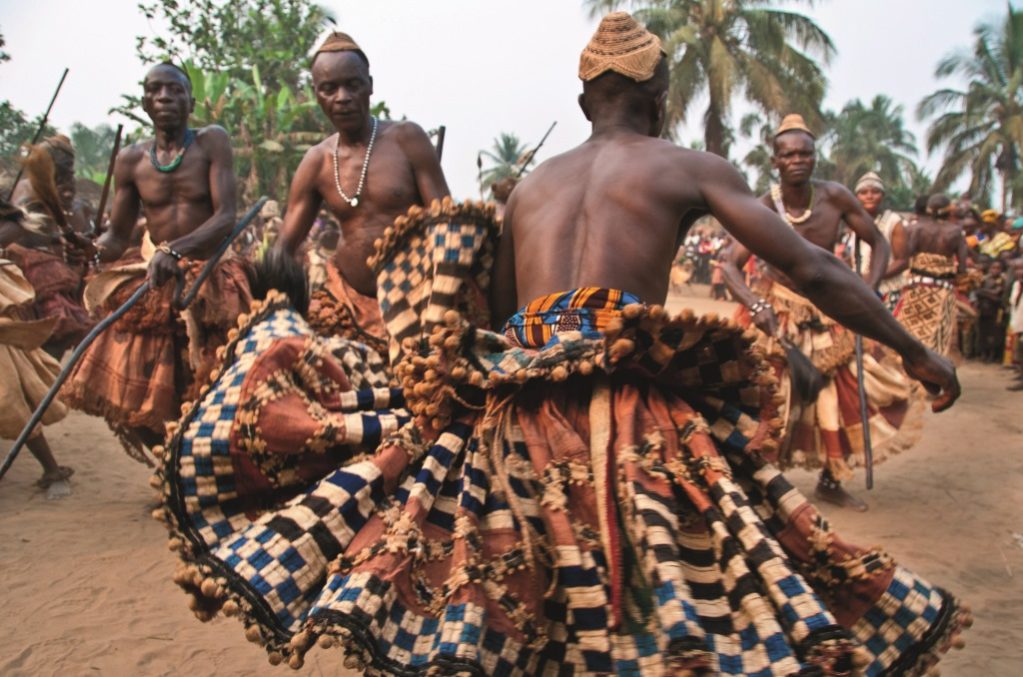Picture yourself living in early 19th century Africa. What would you be clad in? Most likely an outfit made of traditional cloth, perhaps Kuba cloth.

“We have one of the most beautiful art forms in Africa,” says Crown Prince Kwete Kwete.
Prince Kwete is the son of the 125th king of the Bakuba Kingdom, King Kot Mbueki III. Textiles from Africa are said to be one of the most important gifts to the world of art. The Kuba cloth is associated with royalty and has inspired great artists like Pablo Picasso and Henri Matisse. Matisse’s appliquéd techniques were influenced by the Kuba cloth displayed in an exhibition at the Museum of Modern Art in New York.
Kuba cloth originated with King Shamba Bolongongo and his son, Shaamweky. From the 16th century, the Kuba people have dressed themselves in Kuba cloth, wrapping it around their waists like a skirt. The cloth is made of raffia from the palm tree. The raffia is picked and dried, softened and woven into different lengths and sizes. The process can take three to four weeks or up to a year.
“Textiles are a sign of wealth for us and every king has a cloth that he wears during ceremonies. When a member of the royal family dies, women from the kingdom wear a certain color cloth for six months. Designs are symbolic and used for particular ceremonies,” says Prince Kwete.
When a king dies, his wives wear special red cloth with subtle patterns in velvet on the borders and openwork embroidery in the middle. Specially designed weavings made of leopard skin and shells are reserved for the king, his wives, the royal court and dancers.
The Kuba cloth is made by the people of the Bakuba Kingdom in the Democratic Republic of Congo—formerly Zaire. But it is the Shoowa, a small sub-tribe of the Bakuba who are renowned for making intricate textiles from the palm fiber creating a tuft pile-like effect using the clipped raffia threads. Weaving intricate geometrical designs can take up to a year.
Some of the designs are on display in museums around the world and have been studied by scholars like George Meurant of Belgium. The beauty and complexity of the Kuba cloth has only recently been appreciated at a time when the most elegant designs are disappearing. European collectors of African textiles started amassing collections of embroidered cut-pile textiles towards the end of the 19th century. These pieces often fetch millions of dollars at auctions. Most collectors are private individuals in America, Britain, France and Poland.
Kuba cloth is on the brink of being lost; Prince Kwete is trying to preserve it with the help of the UN Educational, Scientific and Cultural Organization (UNESCO).
“The Kuba cloth is displayed in leading museums, but people do not know where the Bakuba Kingdom is located. Kuba is still existent and we are a population of approximately half a million people including immigrants. Congo is bigger than Eastern Europe and Kuba land is three times the size of Belgium,” he says.

Together with his father, Prince Kwete is working with the central government of Congo to reach out to other Africans through culture.
“DRC is known for war, but there are attractive investment opportunities in the country.”
King Kot Mbueki III is the first king of Bakuba to have travelled to Kinshasa and Europe.
“He ‘broke away’ from the kingdom by preserving tradition,” says Price Kwete who describes the Bakuba Kingdom as democratic.
“The king is there to reign and not to rule. We have managed to maintain our culture and art because each tribe is represented in the king’s court. When selecting a chief of a village, the people of a village have to go to the king and suggest someone. My father then honors the people’s wish by appointing the suggested person. This goes back nine centuries.”
According to Kenyan fashion model Emma Too, the Kuba cloth is one of the most valuable African textiles together with the Ashanti and Kente from West Africa. American fashion designer Ralph Lauren is known to have made several designs using the Kuba cloth and supermodel Iman wore Kuba designs when she modelled for Africa Heritage. The cloth is also used to decorate homes. Because of its growing demand, the market has been flooded by fake cloth.
“You can tell an original Kuba cloth by how it has been sewn, designed and the quality. If you compare a genuine and fake cloth, the quality of material is world’s apart,” says Prince Kwete.
The people of the Bakuba Kingdom use the cloth as a source of income to support their families through school.
“Since our main source of income was farming and that can barely sustain families, you find people selling their valuable pieces,” says Prince Kwete, who regularly organizes auctions to arrange money for projects in the kingdom.
The price of the Kuba cloth depends on the year it was made, how long it took to make, the design and history of the piece. There is a museum in Mshenge—the capital of Bakuba—which is used by the royal family to display valuable pieces.
“Once any society in Africa loses its identity and adopts a new one, your culture disappears,” says Prince Kwete.
